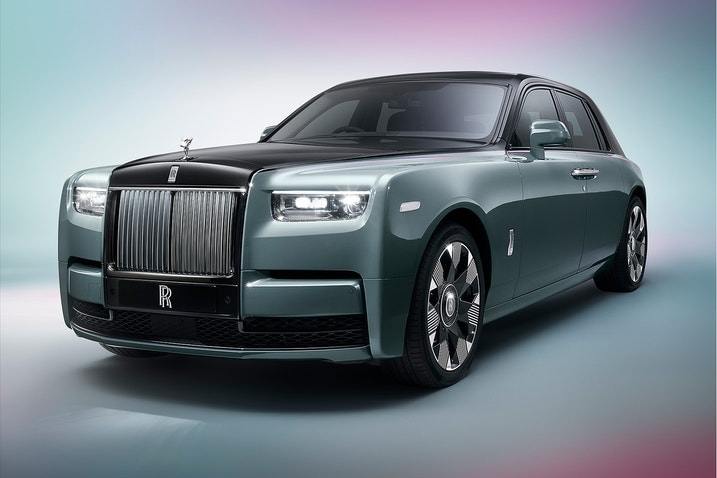Suicide doors hold a special place in automotive history. This guide explores the rich heritage, ingenious design, safety considerations, cultural significance, and enduring appeal of suicide doors.
The history and evolution of suicide doors
Origins
The concept of suicide doors can be traced back to the early 20th century, when the idea emerged as an innovative way to enhance automobile style and accessibility. The first known implementation of this design can be found in horse-drawn carriages, where passengers would gracefully enter and exit through rear-hinged doors, a feature that would later find its way into the burgeoning automotive industry.
The name "suicide doors" itself is a more recent coinage, first appearing in the 1960s as a reference to the perceived safety hazards associated with this door configuration; in recent years, they're often called "coach doors." The aerodynamic drag created by the open door while the vehicle was in motion posed a risk of the door swinging open unexpectedly, potentially leading to occupant ejection — a concern that would eventually contribute to the design's decline in popularity.
The golden era: 1920s to 1960s
Suicide doors reached the pinnacle of their popularity during the mid-20th century, adorning a diverse array of vehicles, from coupes and sedans to trucks. This era witnessed a true celebration of automotive artistry, with suicide doors becoming synonymous with prestige and exclusivity. Luxury automakers such as Lincoln and Rolls-Royce embraced this design in a bid for elegance and innovation.
The Lincoln Continental, with its iconic rear suicide doors, epitomized the glamour of the 1920s and '30s, while the Rolls-Royce Phantom embodied the pinnacle of opulence. These vehicles weren't just modes of transportation; they were rolling works of art, their suicide doors serving as grand entrances to a world of luxury.
Decline and modern resurgence
As safety regulations tightened and consumer preferences evolved, the use of suicide doors in mainstream vehicle production gradually declined. Concerns over accidental opening and occupant ejection, coupled with the emergence of alternative door designs and changing automotive engineering practices, contributed to the phaseout of this once-revered feature.
However, in recent years, suicide doors have experienced a renaissance. Luxury automakers, always attuned to the desires of their discerning clientele, have reintroduced these iconic doors, masterfully fusing heritage-inspired aesthetics with cutting-edge technology.
Design and mechanism
Structural design
Reinforced hinges and handles contribute to the overall functionality and longevity of suicide door designs. Meanwhile, the larger opening created by the rear-hinged configuration enhances access to the vehicle's rear seats, offering greater comfort and convenience for passengers.
Safety features and innovations
Historical safety concerns surrounding suicide doors have prompted the development of various enhancements, including integrated seat belt systems, reinforced latches and advanced sensor technologies. Such safety measures help reduce the risk of a door accidentally opening or an occupant being ejected while the vehicle is in motion.
Modern suicide doors feature advanced safety solutions, such as automatic locking mechanisms, crash-resistant materials, and sophisticated occupant detection systems, effectively addressing the safety challenges of their predecessors.
Safety considerations
Historical safety concerns
While suicide doors were once celebrated for their aesthetic appeal and practicality, their design raised significant safety concerns, particularly regarding the risk of accidental door opening and occupant ejection while the vehicle was in motion. The inherent risk of doors unexpectedly swinging open posed a hazard, prompting apprehension among regulators and consumers alike.
Incidents involving occupants falling from moving vehicles with open suicide doors further fueled these safety concerns, ultimately leading manufacturers to implement design modifications and safety enhancements to mitigate potential hazards.
Cultural impact and significance
Influence on car design and consumer preference
Luxury automakers have embraced the timeless elegance of suicide doors, incorporating heritage-inspired designs with modern engineering solutions in their flagship models. Rolls-Royce uses these on every one of its cars, for example.
Car enthusiasts and novices alike associate vehicles with suicide doors with luxury and exclusivity, perceiving them as symbols of status, refinement and discerning taste. This enduring appeal has kept the demand for suicide doors alive, inspiring automakers to continue pushing the boundaries of design and functionality.
Buying and customization guide
Choosing a car with suicide doors
Prospective buyers must weigh the pros and cons of purchasing a new or vintage model, as each option presents unique advantages and challenges. New models offer the latest safety features and technological advancements, while vintage cars exude a sense of historical significance and nostalgia.
Customizing your vehicle
While some luxury automakers offer suicide doors as a factory option, enthusiasts may opt to customize their existing vehicles to incorporate this distinctive feature. However, such modifications come with legal and safety considerations that must be carefully evaluated.
Consulting with certified professionals and adhering to local regulations is essential when undertaking any customization project involving suicide doors. Recommended modifications and accessories can enhance the functionality and aesthetics of the vehicle while ensuring compliance with safety standards.
Maintenance and care
Routine maintenance tips
Like any automotive feature, routine maintenance is vital for ensuring suicide doors operate smoothly and safely over time. Regular inspections, cleaning, and promptly addressing any issues can prevent bigger problems down the road.
Preservation of vintage models
For owners of classic cars with suicide doors, connecting with restoration experts and enthusiast communities provides valuable insights into preserving these automotive treasures for future generations.
The enduring appeal of suicide doors lies in their ability to merge innovation with timeless style. As automotive design continues to push boundaries, these iconic doors will undoubtedly remain a hallmark of human ingenuity and the pursuit of automotive excellence.


 by
by  edited by
edited by 


